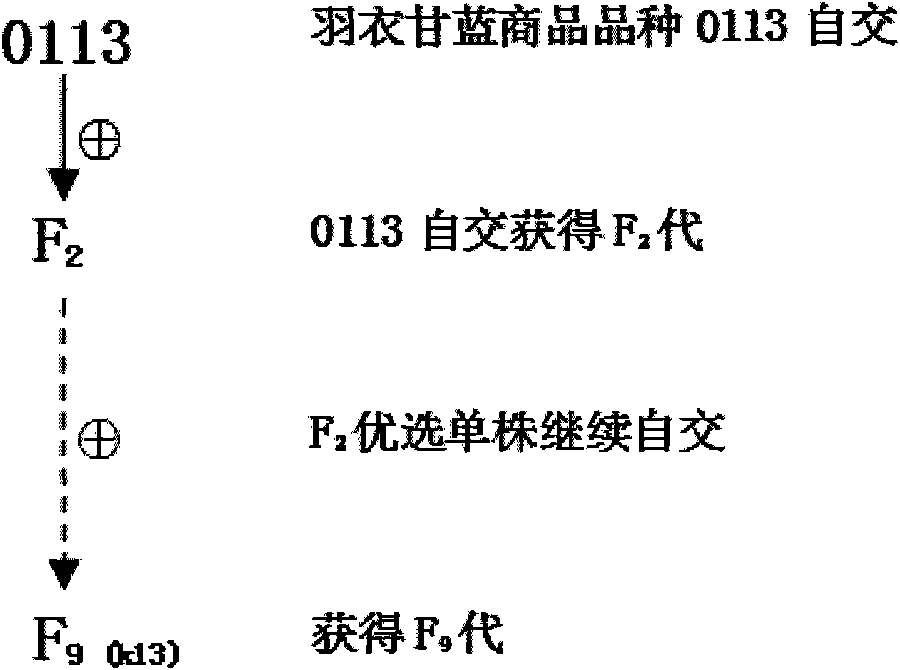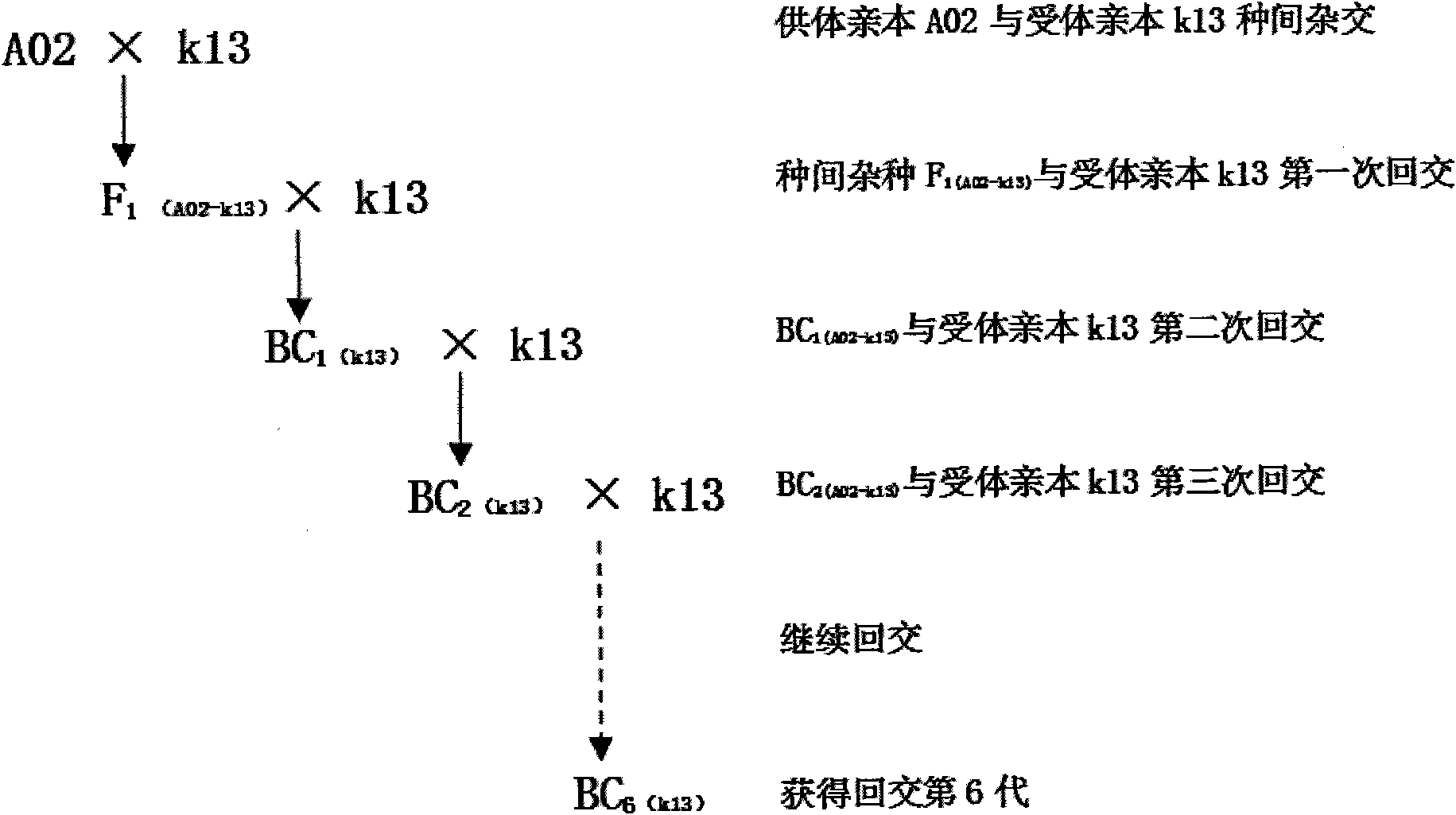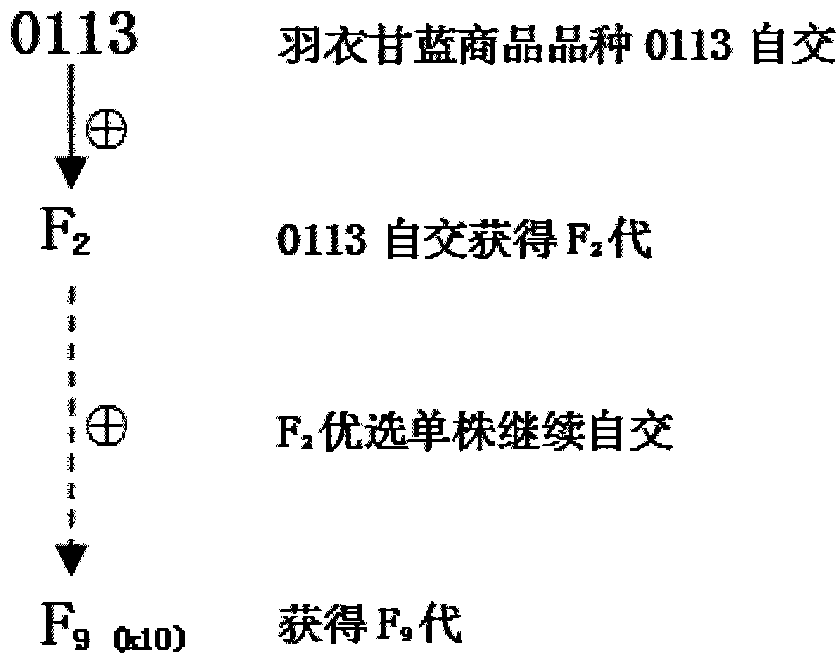Method for constructing collard cytoplasmic male sterility near-isogenic lines
A near-isogenic line and kale technology, which is applied in the field of flower breeding, can solve the problems such as the near-isogenic line of cytoplasmic male sterility in kale that has not yet been seen.
- Summary
- Abstract
- Description
- Claims
- Application Information
AI Technical Summary
Problems solved by technology
Method used
Image
Examples
Embodiment 1
[0023] Example 1: Male sterile near-isogenic lines k13 and CMSk13 of kale were successfully constructed.
[0024] The specific method is as follows:
[0025] A. Recipient Parental Breeding: See figure 1 , select kale commercial variety 0113, carry out self-purification, until the 9th generation of self-cross (F 9 ), bred the kale inbred line k13, and the inbred line k13 was highly uniform among the lines. The typical characters of the inbred line k13 are shown in Table 1. The inbred line k13 was used as the recipient parent.
[0026] Table 1 Recipient parent k13, donor parent A02 and their interspecific hybrid F 1(A02-k13) Comparison of 11 typical traits of
[0027]
[0028] B. Preparation of the donor parent: the cytoplasmic male sterile head cabbage inbred line A02 was selected as the CMS donor parent. The typical traits of inbred line A02 are shown in Table 1.
[0029] C. Interspecific hybridization: see figure 2 , with the donor parent A02 as the female parent ...
Embodiment 2
[0048] Example 2: Male sterile near-isogenic lines k10 and CMSk10 of kale were successfully constructed.
[0049] The specific method is as follows:
[0050] A. Recipient Parental Breeding: See image 3 , the commercial variety 0113 of kale was selected, selfed and purified, and the kale inbred line k10 was bred until the ninth generation of selfing, and the lines of the inbred line k10 were highly uniform. The typical morphological characteristics of the inbred line k10 are shown in Table 4. The inbred line k10 was used as the recipient parent.
[0051] Table 4 Recipient parent k10, donor parent A02 and their interspecific hybrid F 1(A02-k10) Comparison of 11 typical traits of
[0052]
[0053] B. Preparation of the donor parent: the cytoplasmic male sterile head cabbage inbred line A02 was selected as the CMS donor parent. The typical morphological characteristics of inbred line A02 are shown in Table 4.
[0054] C. Interspecific hybridization: see Figure 4 , with...
Embodiment 3
[0065] Example 3: Male sterile near-isogenic lines k04 and CMSk04 of kale were successfully constructed.
[0066] The specific method is as follows:
[0067] A. Recipient Parental Breeding: See Figure 5 , the commercial variety 0104 of kale was selected, selfed and purified, and the kale inbred line k04 was bred to the ninth generation of selfing, and the lines of the inbred line k04 were highly uniform. The typical morphological characteristics of the inbred line k04 are shown in Table 7. The inbred line k04 was used as the recipient parent.
[0068] B. Preparation of the donor parent: the cytoplasmic male sterile head cabbage inbred line A02 was selected as the CMS donor parent. The typical morphological characteristics of inbred line A02 are shown in Table 7.
[0069] C. Interspecific hybridization: see Figure 6 , with the donor parent A02 as the female parent and the recipient parent k04 as the male parent, interspecific crosses were carried out. The cross pollinat...
PUM
 Login to View More
Login to View More Abstract
Description
Claims
Application Information
 Login to View More
Login to View More - R&D Engineer
- R&D Manager
- IP Professional
- Industry Leading Data Capabilities
- Powerful AI technology
- Patent DNA Extraction
Browse by: Latest US Patents, China's latest patents, Technical Efficacy Thesaurus, Application Domain, Technology Topic, Popular Technical Reports.
© 2024 PatSnap. All rights reserved.Legal|Privacy policy|Modern Slavery Act Transparency Statement|Sitemap|About US| Contact US: help@patsnap.com










